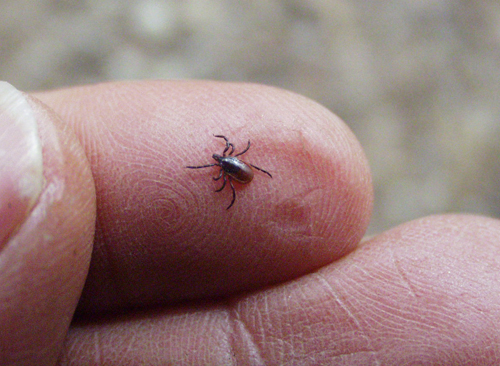State Senate’s tick task force releases data, plans action

New data outlining the extent of Lyme and other tick-borne diseases in New York State was released Thursday by a state Senate group that also came up with an action plan for combating the spread of such diseases.
Known as the Senate Majority Coalition Task Force on Lyme and Tick Borne Diseases, the task force was organized in October amid rising concerns regarding the spread of such diseases statewide.
Highlights from the data include:
• Over 95,000 Lyme cases have been confirmed in New York State since the disease was first tracked in 1986, according to the state Department of Health.
• 462 cases of Lyme disease have been diagnosed statewide so far in 2014.
• Records show Lyme disease as the listed cause of death for nine New Yorkers over the past 13 years. The victims were all residents outside of New York City, with five from the mid-Hudson Valley.
• Babesiosis and anaplasmosis cases have increased in prevalence, according to the report. The Department of Health currently investigates cases of Lyme, babesiosis, ehrlichiosis, anaplasmosis and Rocky Mountain spotted fever.
• Since 2004, 15 cases of Powassan encephalitis, a newly discovered disease in the state, have been reported. Five of the 15 cases proved fatal.
Task force recommendations include the creation of a Department of Health State Action Plan, which is already in the works, to reduce the incidence of infections and increase detection, diagnosis and treatment where cases do occur.
Highlights of that plan thus far include a public information campaign to encourage increased public awareness and education, particularly during peak seasons in New York State.
In June, the state Senate started taking legislative action calling on the federal government to better address tick-borne diseases. The Senate adopted a resolution calling on the Centers for Disease Control to reevaluate its medical guidelines for the treatment of Lyme and other tick-borne diseases.
They also called for additional funding for research on these diseases from federal agencies like the National Institutes of Health and the Department of Defense, given the high number of cases found each year.
“This brings Lyme and tick-borne disease to the forefront to make sure the CDC commits the necessary funding and resources that these diseases warrant,” said state Senator Ken LaValle (R-Port Jefferson). “For the first time, there is an action plan to consolidate our many resources and focus on disease diagnosis and prevention strategies.”
The state Senate recently passed legislation aimed at protecting doctors within the state who are caring for Lyme patients. If signed into law, the bill will ensure that the New York State Office of Professional Medical Conduct does not identify, investigate, or charge a practitioner for treating a patient in a way that is not universally accepted by the medical community, such as administering long-term antibiotics.
Vermont, Connecticut, Massachusetts, Rhode Island and California have already passed similar legislation.
The coalition plans to host a statewide conference to bring together universities and institutes across the state to focus on building collaboration between the research community, promoting data sharing and collaboration, and increasing access to federal National Institutes of Health grants.
Mr. LaValle and Assemblyman Fred Thiele (D-Sag Harbor) also helped secure $500,000 in the 2014 state budget for Lyme disease and tick-borne illness prevention and treatment to be allocated on a statewide basis.
“I am pleased that we have secured funds and are advocating for initiatives such as the four-poster program that has had such good results in places like Shelter Island, where there are high incidences of Lyme disease.” Mr. LaValle said.
Full report available below:
Senate Majority Coalition Task Force on Lyme and Tick Borne Diseases 2014 Report







